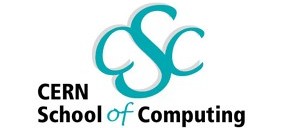|
Series |
Type |
Lecture |
Description |
Lecturer |
| |
|
|
|
|
|
Grid Technologies
|
Lectures |
Lecture 1 |
Introduction to the Grid computing
An Overview about the Grid Track, it's lectures, the Grid
architecture, techniques used to build Grid middleware, and
major Grid infrastructures is given |
Erwin Laure
Heinz
Stockinger
|
|
Lecture 2 |
Job
Submission / Workload Management
Most of the users of the Grid software interact with the
system by submitting their jobs (executable programs) to a
Resource Broker which does a matchmaking on available and
requested resources and then dispatches jobs to resources on
the Grid. This lecture provides background about the work
load management software system and details about how job
submission is done. |
Erwin Laure
Heinz
Stockinger
|
|
Lecture 3 |
Data
Management
One of the main objectives of a Data Grid is the management
of large distributed data stores. This lecture gives an
overview about replica and meta data management as well as
the software tools provided to deal with data management
problems. |
Erwin Laure
Heinz
Stockinger
|
|
Lecture 4 |
Information Systems
In a Grid
environment, there are several hardware and software
resources that can be used by end users as well as Grid
services and applications. Information systems are used to
keep track of resources and also to monitor the current
status. Current solutions are presented in detail and how
end users can interact with them. |
Erwin Laure
Heinz
Stockinger
|
|
Lecture 5 |
Grid
Service Technologies
Recent
advances in Grid technologies allow to move from tightly
coupled Grid systems to more loosely coupled Grid Services
exploiting Web Service technologies. In this lecture we
introduce the basic concepts of Grid Services and their
underlying standards. |
Erwin Laure
Heinz
Stockinger
|
|
Exercises |
Exercise 1
Exercise 2 |
Hands-on
exercise on Job submission
Practical exercises where participants will actively use
Grid Software for executing their computation on the Grid. |
Erwin Laure
Heinz
Stockinger
Assisted by
Marc Ozonne |
|
Exercise 3
Exercise 4 |
Hands-on
exercise on Data Management
Practical exercises where participants will actively use
Grid Software for solving data management problems, combined
with computational tasks. |
Erwin Laure
Heinz
Stockinger
Assisted by
Marc Ozonne |
|
Exercise 5
Exercise 6
Exercise 7 |
Hands-on
exercise on Grid Services
Practical exercises how Grid Services technologies work,
including setting up a customized Grid Service |
Erwin Laure
Heinz
Stockinger
Assisted by
Marc Ozonne |
|
|
Prerequisite
Knowledge |
Desirable prerequisite
and references to further
information |
The participant should have basic
understanding of :Linux shell Script as well as Java. In
addition, some understanding of XML is desirable.
References
|
|
|
|
|
|
|
|
|
Grid
Operation |
Lectures |
Lecture 1 |
Grid Operation
Diverse applications communities are expecting production
like quality grids. We will introduce the goals and the
issues involved in order to ensure the availability,
dependability and reliability of grids. In that regard, the
operation model including workflow, procedures and tools set
up in the scope of the "Enabling Grids for E-sciencE" (EGEE)
project and the implications of grid operations in LHC
computing Grid (LCG) will be addressed. |
Hélène Cordier |
|
|
|
|
|
|
|
Grid
Optimization Techniques |
Lectures |
Lecture 1 |
Grid Optimization Techniques
The main
usage of Grid computing in High Energy Physics is in the
field of high throughput computing, i.e. to give computing
power to a many users at the same time. However, in order to
reach a good overall performance, several optimization
techniques have to be applied.
Furthermore, the lecture also discusses classical high
performance computing (massive parallel computing) and its
application in the Grid. |
Heinz
Stockinger |
|
|
|
|
|
|
|
Grid
Technologies |
Wrap up |
Session 1 |
Wrap-up of
Grid Technologies Track |
Erwin Laure
Heinz
Stockinger |

